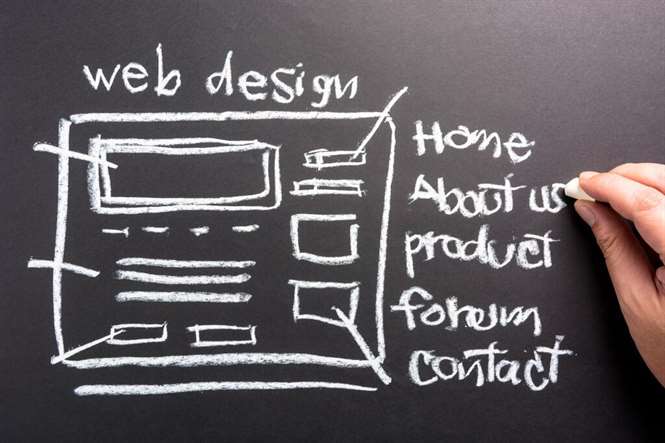Content
- Why Is a DEEP Backlog Important for Product Managers?
- Make the Product Backlog DEEP
- Creating a DEEP Product Backlog
- Achieve a DEEP product backlog with Easy Agile
- New Live, Online Courses: Better User Stories, and Planning Fixed-Price Projects
- DEEP Backlog
- How does the Scrum Master serve Product Owner, Development Team and Organization?
INVESTing in stories and tasks over a longer time horizon will yield poor returns. We can pack stories with so much information that no one has the time or desire to read them or supply so few details they’d fit on a fortune cookie strip. A DEEP backlog refers to the grooming characteristics a product backlog has. DEEP is an acronym for detailed appropriately, emergent, estimated, and prioritized. Maintaining the product backlog is the primary responsibility of the product owner or product manager. You should rank product backlog items in order of their direct significance to core business strategies, e.g., product placement, entry into new/existing market, and so forth.

The Product Backlog lists all features, functions, requirements, enhancements, and fixes that needs to be developed for the product release. The high priority items in the Product Backlog are fine grained and have more details as well as accurate estimates because of more information and greater details of those items. Items on the lower priority are big https://globalcloudteam.com/ items with high level estimates. As the team gets more detailed information on lower priority items, these items are further split in to small items. The Development Team is responsible for the estimates of the items in the Product Backlog. The product backlog should be sorted with the most valuable items at the top and the least valuable at the bottom.
Why Is a DEEP Backlog Important for Product Managers?
The product backlog should instantly reflect the effects of new developments and changes to a product’s market conditions. Easy Agile is dedicated to helping agile teams work more effectively. We have a suite of Jira apps designed for teams that want to develop products that put the customer at the forefront of decision making. Ordering backlog items to deliver the most impact over the next sprint. Adding detail to high-priority backlog items for greater comprehension. A product backlog represents all of the goals and desired outcomes within the development of a product.
This is because, by definition, it is a prioritized or ordered list of items to work on. We place high-priority items that promise the most value at the top. On the other hand, we put items with lower values in lower places in the backlog. This makes more obvious what we must do to achieve the best results.
Make the Product Backlog DEEP
They help teams organize and prioritize user stories while visualizing the customer journey. Keeping your customers embedded in your process will help you make refinement decisions that are in the best interest of the customer, no matter what phase of development you’re in. The concept is applied throughout the product backlog refinement process, which is a critical part of backlog management. Backlog refinement, previously called backlog grooming, is an ongoing process that ensures a backlog is in tip-top shape.
When the item is broken down into smaller items and new information appears, the new items will be reestimated with the numbers on the left side of the sequence where the gap between options is tiny. I ask the team to show me its product backlog, and I ask a few questions to assess if and to what extent it isDEEP. As you’re well aware, the agile methodology centers around flexibility and the ability to evolve a plan as new information or roadblocks appear.
- If we get to the next user story and no one remembers what it’s for, it probably wasn’t that valuable.
- Items in the backlog should contain enough contextual information for you cross-functional team to understand and discuss.
- As you refine your backlog and add more details to top-priority items, you can improve your estimation.
- User stories are detailed based on their priority, those that are to be worked on soon (up-coming sprint) need to be sufficiently detailed by the Product Owner and understood by the dev team.
- Linear rank ordering (i.e., 1, 2, 3, 4 ….n) avoids inflation of priority, keeps everyone honest, and forces decisions on what is really important.
- While a product owner deems the various product deficits insignificant to warrant delaying a product’s launch, a product backlog is indispensable in ongoing and planned product development.
- Easy Agile TeamRhythm transform your flat product backlog, prioritizing based on value to the customer and bringing the customer journey to life.
If I am a team member and I have to pull an item from the backlog, do I have to ask before that which item to start working on? This in turn reduces the likelihood of delivering a successful product. The product backlog resembles a disguised deep backlog requirements specifications, which is a common trap to fall into. Over the time horizon of multiple release cycles, INVESTing in stories has even poorer returns compared to INVESTing in stories for a single release cycle.
Creating a DEEP Product Backlog
Items in the Product Backlog that are on the top should be the more detailed in comparison with the items that are lower. The top ones should be smaller and detailed enough, so they can be completed in the following iteration. Product backlog is an ordered list of the known things that need to be done in a product. The backlog is a living artefact and that is why ensuring that the Product Backlog is DEEP requires regular refining or grooming it. So that’s DEEP, and I really like marrying it with this Product Iceberg analogy as that really helps with Definition of Ready, and reinforces each of the Detailed, Estimated, Emergent, and Prioritised angles.

Which to me is a long way from marking up stories into an overall MVP or Release. This attribute of an excellent product backlog is especially critical in Agile. As we progress and get new information, there will be a need to make some alterations or modifications. Items may need to be added, re-prioritized, or removed altogether.
User stories are detailed based on their priority, those that are to be worked on soon (up-coming sprint) need to be sufficiently detailed by the Product Owner and understood by the dev team. LIkewise user stories that are lower in order of priority and are not going to be developed for awhile would be described with less detail, and be refined and decomposed appropriatly over time. While a product owner deems the various product deficits insignificant to warrant delaying a product’s launch, a product backlog is indispensable in ongoing and planned product development. There are many benefits to keeping your product backlog in good shape.
The product owner is in charge of ordering and prioritizing backlog items, placing high-priority items at the top. They are also responsible for backlog refinement, which ensures all backlog items are organized, have appropriate details, and are ready for any upcoming sprint planning. Obtaining a DEEP backlog is one of the key outcomes of a product backlog grooming or refinement session, which is a recurring event for agile product development teams.
Achieve a DEEP product backlog with Easy Agile
By always working in priority order, the team is able to maximize the value of the product or system being developed, and maximise Return on Investment . We may not be wrong to say that product professionals create backlogs that are estimated and prioritized in most cases. The criteria that are more likely to not be given enough attention are the first and the third . By trying to make our product backlog DEEP, we can ensure that we do not overlook those attributes as many do. Regarding this attribute of the product backlog, I assess the quality of the set priorities. If I am a stakeholder who wants to know more about the team’s work and I open the PB, will I see a mirror of the current situation?

At the end of the sprint, a sprint review is conducted with the stakeholders to better understand what to tackle next. Backlog items that weren’t completed may be pushed back into the larger product backlog to get to at a later date or during the next sprint. Another sprint planning meeting will prepare the team to tackle the next batch of backlog items. Maintaining the product backlog is a primary responsibility of the product owner or product manager. Part of that process involves refining details and estimates and prioritizing items. Well, it is probably safe to say that a product backlog isn’t one without prioritization.
Keep reading to add another acronym to your tool belt and learn how to whip your Product Backlog into shape. Items in the backlog should contain enough contextual information for you cross-functional team to understand and discuss. Higher-priority user stories will have greater detail and context and be clearly defined.
New Live, Online Courses: Better User Stories, and Planning Fixed-Price Projects
Let’s examine what each of the four key attributes of a good product backlog entails. A backlog should have clear implementation timelines for the various efforts/initiatives to address product deficiencies. The items that are big and/or with many unknowns are estimated with numbers on the right side of the line. For example, when the team gives 20, this might be everything between 14 and nearly 30.
UK’s Sunak tells Egypt’s Sisi of ‘deep concern’ over hunger striker -readout – Yahoo Eurosport UK
UK’s Sunak tells Egypt’s Sisi of ‘deep concern’ over hunger striker -readout.
Posted: Mon, 07 Nov 2022 18:52:18 GMT [source]
Every week we’d review the project plan, and every week we shifted dates. Items in the backlog should contain enough contextual information for your cross-functional team to understand and discuss. DEEP is a useful concept to be applied in the Product Backlog refinement process which involves the act of adding detail, estimates, and order to items in the Product Backlog and keeping it in shape. As the project progresses, more and more information and knowledge are obtained, and the user stories in the product Backlog are also added, removed, or rearranged.
DEEP Backlog
However, sometimes certain implementation-level dependencies may be unavoidable. The Big Design Up Front approach claims we can predict all outcomes, plan contingencies, and execute perfectly. The agile manifesto has something to say about this topic as well. Still, the truth of the matter is that, at any given point, we know the least we’re ever going to about a project because we acquire new information.
How does the Scrum Master serve Product Owner, Development Team and Organization?
As Pichler advises, we should summon the courage to tell how lengthy and overly detailed product backlogs can make our work harder rather than easier if presented with one. We may make clearer how such backlogs can hurt our ability to deliver a winning product. It’s best to put aside an excessively detailed product backlog handed down to us and develop a fresh one from the roadmap based on the DEEP principles. Note that the Scrum framework does not suggest any prioritisation factors.
Agile Product Management with Scrum
It is the single source of requirements for any changes to be made to the product.” The Product Owner is responsible for the Product Backlog, including its content, availability, and ordering. O Product Access, i.e., the different avenues through which customers gain access to a non-tangible product, i.e., a service offered in-store, online, or through an affiliate. ● Current market conditions and trends, i.e., market demand the product and expected short-term/long-term changes. Stories are independent; they offer distinctly different functionality and don’t overlap. Moreover, at the implementation level, these stories should also be as independent of each other as possible.
I like abbreviations because they help us remember something easily. The thing I don’t like is that most people don’t understand the meaning behind each item. My recommendation is to discard the product backlog, create a product roadmap, and derive a new backlog from it that fulfils the DEEP criteria, even if that’s not necessarily what the boss might want to hear. ? Read our guide to incorporating user story points to start using this technique. The Scrum product backlog represents a small subset of the overall product backlog. The product backlog is the entire bottle of wine, while the sprint backlog is the glass of wine you’re going to tackle next.
This mnemonic helps us remember the qualities of a healthy backlog. Once we know what healthy looks like, it’s easier to see where we can improve and advance toward that target. Items on the backlog are ranked based on their value and the strategic purpose they serve, with higher-value items placed at the top. During Product Backlog refinement, items are reviewed and revised. Refinement usually consumes no more than 10% of the capacity of the Development Team.
